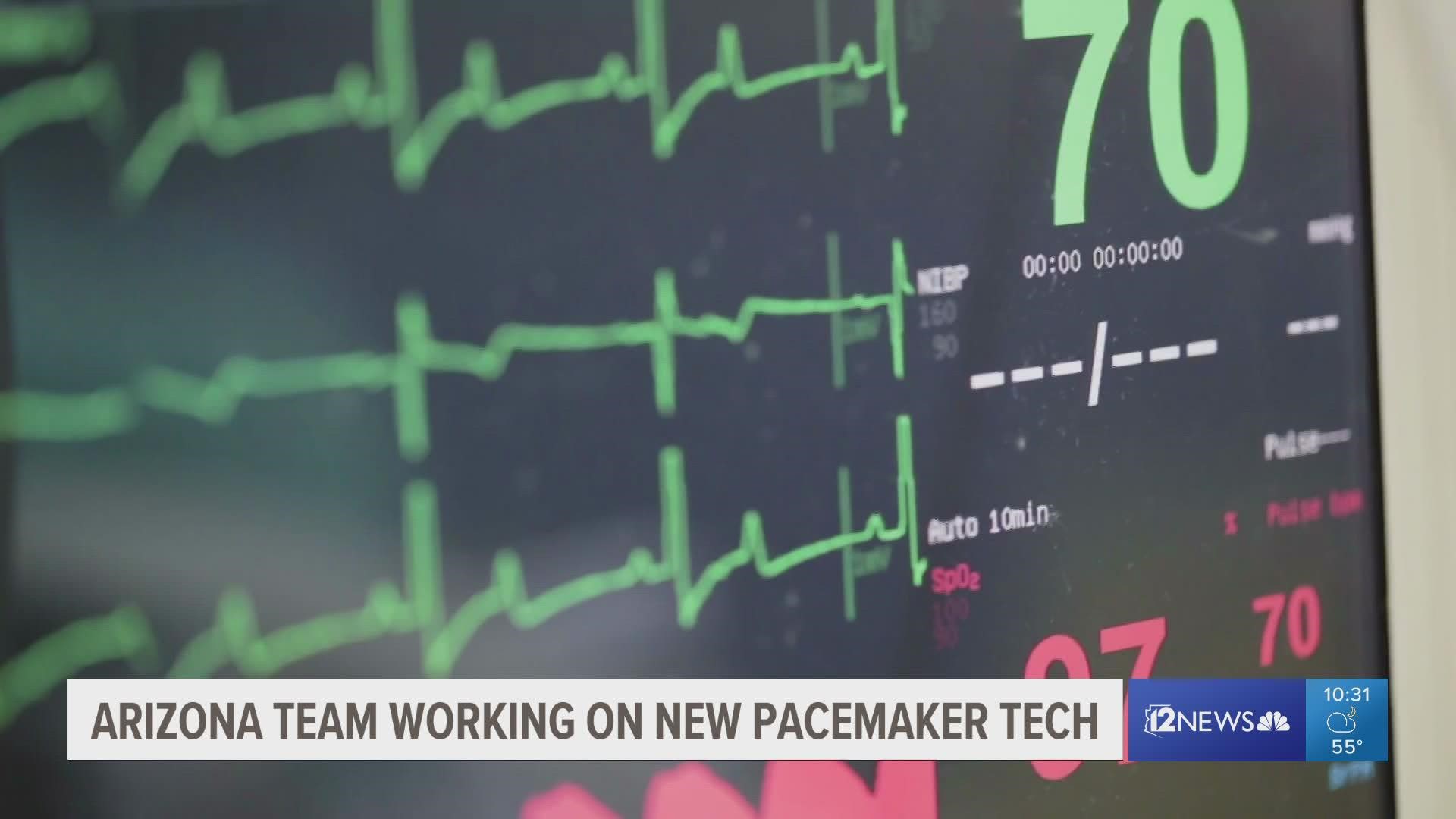PHOENIX — Thousands of people go to the hospital every year needing help to keep their hearts on the beat.
In many cases, the answer is a pacemaker. The device first used in the 1960s helps keep a heart in rhythm with an electric shock.
However, a device under development with the help of the University of Arizona hopes to be more effective and less invasive.
“The current devices are either small pills or rather large boxes that get implanted and have one contact with the heart.” Phillip Gutruff, Biomedical Engineer professor, said.
>> Download the 12News app for the latest local breaking news straight to your phone.
Researchers approached Gutruff and his team to help develop a better version of the pacemaker.
“With our devices, we have rethought this a little bit,” Gutruff said. Instead of one heart contact point, the device has several points molded around the heart.
“It’s essentially a mesh that looks like rose petals that engulf the heart,” Gutruff described.
With more contact points, the pacemaker should be able to provide more nuanced care and be less painful.
As part of creating the molded petals, Gutruff and his team wanted to get rid of the large box battery and use modern technology to power the device.
"What we use is near-field powering," Gutruff said.
In oversimplified terms, near-field powering uses a similar technology that allows you to pay with your credit card by tapping on a device. The charging would be encrypted, to prevent malfunctions.
The idea, which still is awaiting human trials, hopes to allow for more nuanced care while being less invasive.
“This is also just a start. For us, it is exciting to see this ultimately see this help human lives.” Gutruff said.
Inspiring Arizona
These are just a few of the inspiring stories of people doing good and supporting those in their communities across Arizona.

